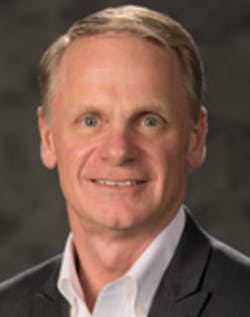This is a tale of two patients—each of whom experienced very different outcomes. I’m going to refer to them as “Patient A” and “Patient B.”
Patient A was a 70-year-old woman from Nevada who returned to the U.S. with an infected swelling in her right hip after a long stay in India1. The infection was “resistant to all available antimicrobial drugs” and she unfortunately died shortly afterward.
Patient B was diagnosed with stage four pancreatic cancer2. Thanks to groundbreaking research on human genome sequencing by TGen3, a nonprofit biomedical research institute, doctors could offer a three-drug cocktail—which put this deadly cancer into remission. They achieved this through the use of precision medicine—a nascent but growing medical discipline that customizes patient care right down to a person’s genes.
Patient B demonstrates the power of genomic sequencing when prescribing a treatment plan for advanced cancer. While Patient A points to an urgent need to understand and map a patient’s bacterium genomic code to effective drugs. The good news is, with new advances in sequencing technology, we could be crossing a new frontier, beyond cancer research.
This supports the Institute for the Future’s (IFTF) research that states we’re entering the next era of human-machine partnerships. During an expert workshop, co-hosted by IFTF and Dell Technologies, panelists agreed that the technologies in play over the next decade could “solve some of the intractable problems that humanity has faced for so long.” We’re certainly seeing this unfold now.
Working together to crack the human genome
Even now, human-machine partnerships are starting to transform the healthcare industry. This is evident in the significant strides TGen has made in expediting patient treatments and bringing medical care from the bench to the bedside.
It took several years at a cost of $3 billion to unlock the human genome (an instruction manual for the human body). Using high-performance computing, TGen is now sequencing genomes in 7-8 hours and spending approximately $1,000 in the process. These achievements, underpinned by technology that can produce exponential computations in a short amount of time, aren’t just producing petabytes more data for analysis—they’re also giving research teams more time to do what they do best—understand diseases and provide treatment plans that overcome obstacles, such as the looming antibiotic crisis. IFTF would describe this dynamic as a human-machine partnership in action.
Precision medicine, a manifestation of human-machine partnerships, could eventually solve the antibiotics crisis. Research facilities are already tracking4 the body’s response to infection as opposed to the presence of a pathogen, in recognition that rapid-detection tests or throat cultures can miss more than 50% of infections and are plagued with false positives (which have contributed to overuse of antibiotics and consequently, antibiotic resistance).
Over the next 10-15 years, we’ll make even more progress in precision medicine. Right now, we have pockets of excellence. TGen is one of them, as is Edico Genome, which has quickened the analysis of whole genome data through its DRAGEN BioIT processor. Edico Genome can accurately analyze over 50 whole human genomes in less than a day, leading to faster diagnoses for critically ill newborns, better cancer diagnostics, accurate prenatal testing for expectant parents, and drug development. By 2030, this will be the norm, but 50 will become 500, 5,000, or 50,000, and healthcare systems around the world will provide personalized treatment plans and better decipher data to find new cures.
The 2030 healthcare blueprint
To achieve this vision, we need three things: First, the technology. Second, a culture of open science and learning, committed to reviewing data in real time and taking a longitudinal view of the patient. And third, a security-first approach.
The technology is already here; from high-performance computing to analytics, and data lake solutions to collaborate across complex data sets. By 2020, humanity will have generated more than 2,314 exabytes of medical data, requiring storage equivalent to that on laptops stretching halfway to the moon. Partners HealthCare is relentlessly exploring more and more of this data. New technologies have allowed Partners HealthCare to do this quickly and efficiently, further enabling effective collaboration across the organization.
Cultural factors are far more variable. Almost half of Iceland’s largely homogenous population has volunteered blood samples to help scientists crack codes for a range of issues, from treating diseases to understanding human intelligence. This ambitious project5 depended on the Icelandic population trusting their sensitive information would be kept confidential, and understanding that by contributing to the study, they would be playing an instrumental role in minimizing genetic risks for certain diseases by advancing precision medicine.
Of course, when dealing with such sensitive data (and at volume), security is paramount. While we’re talking about personalized care, any data that’s being collected for analysis must be anonymized and protected from a cyber breach. Given that the healthcare and life sciences globally listed data privacy and security concerns as one of the top three barriers to digital transformation in the Dell Digital Transformation Index, it stands to reason that more needs to be done to protect this rich bank of confidential, but crucial information.
In short, our future health depends upon safe, secure human-machine partnerships—evident in the progress we’re making with precision medicine: A consequence of human ingenuity and technology’s accumulative raw power. This is a future in which anything is possible—a sentiment shared by Jordon Howard, a Social Good Strategist, millennial, and IFTF workshop delegate, “Many of the complex issues facing society today are rooted in waste, inefficiency, and simply not knowing stuff, like how to stop certain genes from mutating. What if we could solve these problems by pairing up more closely with machines and using the mass of data they provide to make breakthroughs at speed? As a team, we can aim higher, dream bigger, and accomplish more.” Much of this is exemplified in the breakthroughs we’re making, and will continue to make, in precision medicine, by embracing the next era of human-machine partnerships.
References
- Gallagher, J. (2017, January 10). Bug resistant to all antibiotics kills woman. Retrieved from http://www.bbc.com
- TGen, Dell, and Intel—Accelerating Science for Precision Medicine. Retrieved from https://www.intel.co.uk
- Precision Medicine Transformation. Retrieved from http://www.dell.com
- Callier, V. (2015, October 5). Diagnostic developers target antibiotic resistance. Retrieved from http://www.nature.com
- Palmer, K.M. (2015, March 25). Why Iceland is the World’s Greatest Genetic Laboratory. Retrieved from https://www.wired.com



